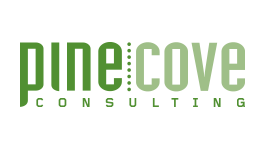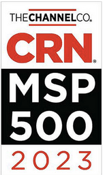Artificial intelligence has rapidly infiltrated various aspects of our lives, including education. Although AI-powered writing tools may offer students some technological advantages, such as completing tasks efficiently, they can also present a problem by encouraging plagiarism and violating academic integrity.
The widespread adoption of AI has caused a profound upheaval in our culture, altering the basic foundations of our existence and entering every facet of our lives, from the workplace to the classroom. As we forge into the field of education, AI has emerged as a potent force, providing a wealth of prospects for teachers and pupils.
Students can now use AI-powered writers to finish their tasks, which undermines the whole basis of education. Still, this technological benefit has also produced a problem. Therefore, balancing ethically utilizing technology and avoiding AI-based plagiarizing is essential. This piece will discuss strategies teachers might use to address this growing problem.
Avoiding turning in AI homework is possible with some elementary tactics and concepts, which include:
Use Plagiarism Detection Software More Widely
To effectively curb the proliferation of AI writers amongst students, one of the most potent tactics an educator can employ is deploying plagiarism detection software at a more expansive level. By utilizing software that is expressly designed to identify instances of academic dishonesty, including when students have used AI writers to complete their coursework, educators can proactively detect and correct such breaches of academic integrity before they escalate into intractable problems.
The benefits of implementing plagiarism detection software extend beyond mere identification of instances of plagiarism, as they can also serve as invaluable educational tools. By availing themselves of these software programs, educators can give students a comprehensive understanding of the underlying mechanisms and algorithms at play, affording them a deeper appreciation of how their coursework is subject to rigorous scrutiny and oversight. This, in turn, provides an effective deterrent against utilizing AI writers, as students become aware of the severe and genuine ramifications that will ensue should they engage in such deceptive practices.
Create Original Assignments
Educators can also take proactive measures by designing distinctive assignments that necessitate original, creative thought to mitigate the potential for students to turn to AI writers to complete their coursework. By crafting tasks that mandate students to synthesize acquired knowledge, address real-world problems, and engage in critical thinking, the likelihood of students resorting to AI writers for assistance is significantly reduced.
The benefits of designing original assignments extend beyond preventing academic dishonesty, as they can cultivate a more engaged and motivated student body. When students are tasked with exceptional and challenging projects, they are more likely to become deeply invested in their coursework and inspired to pursue original solutions. Consequently, this heightened enthusiasm and commitment can reduce the likelihood that students will resort to AI writers as they gain a greater appreciation for the intrinsic value and personal satisfaction that accompanies independent work.
Encourage Live, In-The-Room Active Learning
Yet another effective method for educators to proactively curtail students' proclivity towards utilizing AI writers is to promote dynamic, in-person active learning. Incorporating active learning strategies, such as group discussions, peer-to-peer instruction, and interactive activities, can foster greater student engagement and enable them to remain intently focused on the material.
Through such active learning endeavors, students have a multifaceted educational experience that significantly diminishes their propensity to resort to AI writers to complete their coursework. This is because active learning approaches emphasize the learning process instead of completing assignments, engendering a greater sense of investment and agency in the academic endeavor. Furthermore, encouraging in-person active learning opportunities enables educators to identify students encountering difficulties and provide additional support as warranted.
Have AI Rules for Class
Another practical approach for educators to prevent students from resorting to AI writers is to implement definitive guidelines regarding the use of technology in the classroom, particularly as it pertains to AI writers. Educators can underscore the importance of academic integrity and responsible technology usage by establishing clear-cut regulations concerning AI writer use, such as prohibiting them outright or mandating that students submit their assignments without AI assistance.
Establishing such unambiguous rules can help circumvent confusion and ensure students are fully apprised of their expectations. In addition, these guidelines can serve as a potent educational tool, conveying to students the value of ethical academic conduct and the appropriate role of technology in the academic setting.
Do Students Use AI As A Cry For Help?
Lastly, educators must recognize that students' use of AI writers may serve as a distress signal, indicating that they require additional assistance. In certain instances, students may seek out AI writers due to challenges comprehending the material or experiencing feelings of being overwhelmed by the task at hand. By promptly identifying such students and providing them with additional support, educators can help alleviate their reliance on AI writers.
Such support can take myriad forms, including tutoring, participation in study groups, or individual meetings with the educator. Additionally, educators can provide students with supplementary resources to facilitate more significant comprehension of the subject matter, empowering them to complete assignments without resorting to AI writers.
In conclusion, the rise of AI writers has posed a challenge for educators: finding a middle ground between the ethical uses of technology and preventing academic dishonesty. Educators should proactively discourage students from using AI writers by implementing measures like plagiarism detection software, unique assignments, active learning, clear guidelines for AI use, and supplemental support for problematic students. Teachers must also know that pupils' use of AI writers may require additional help and support. By employing these strategies, teachers may create a classroom climate where students are encouraged to think critically and creatively and are prepared for future academic and professional success.











